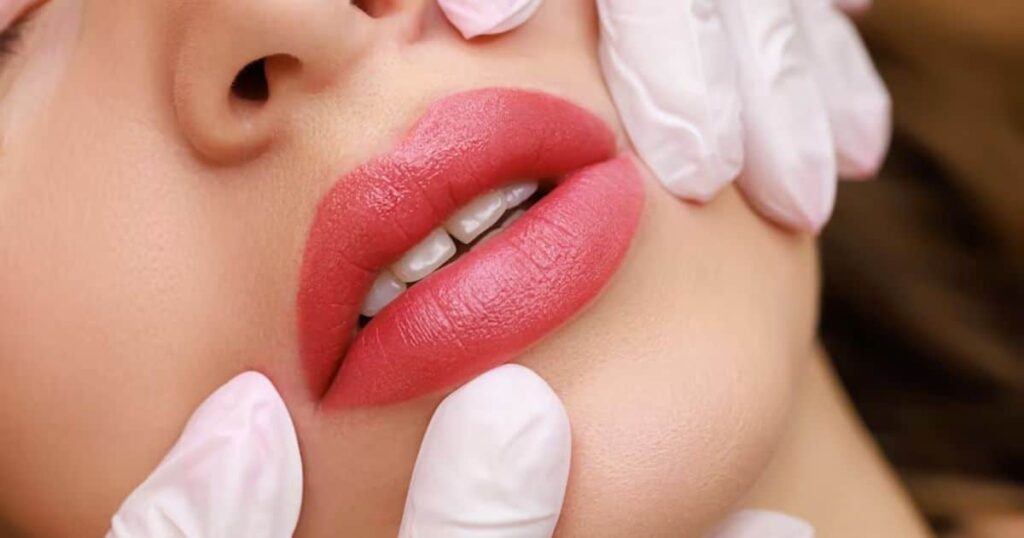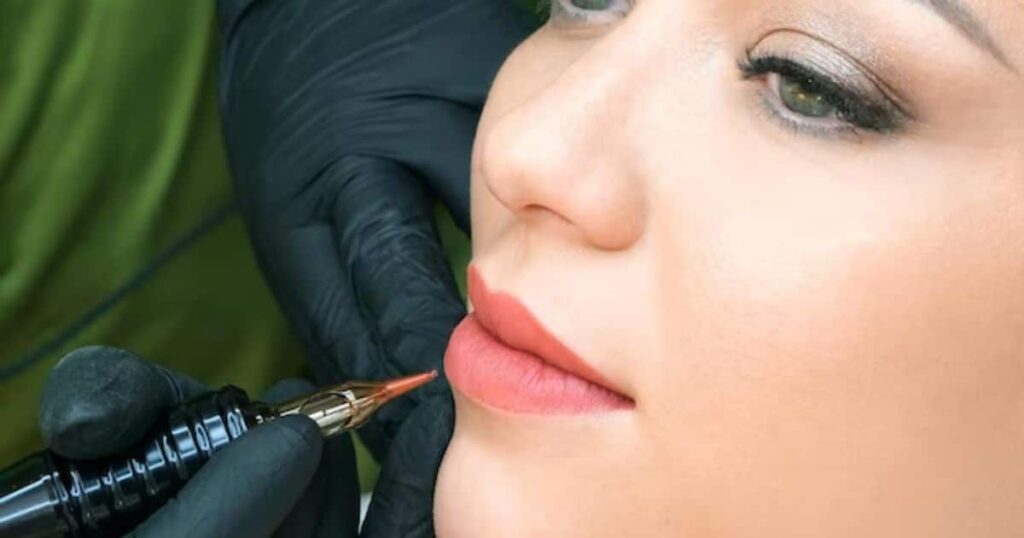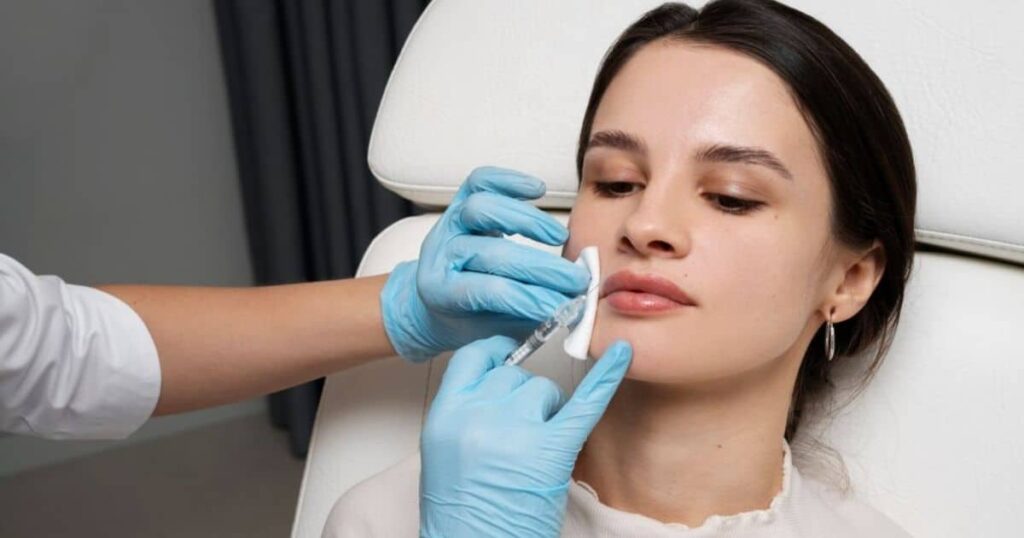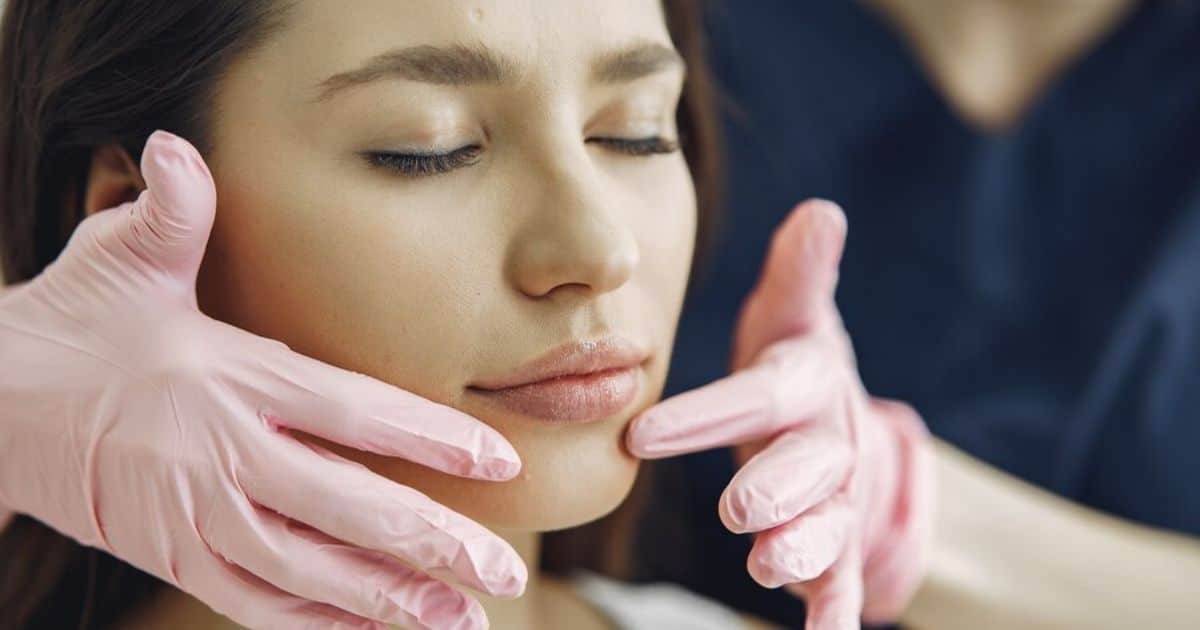Swelling is a very common side effect after lip filler injections. Injectable dermal fillers add volume that enhances the natural shape and structure of the lips and mouth area. However, it’s extremely common to experience some degree of swelling after lip filler injections. While a temporarily swollen pout is a small price to pay for gorgeous lips, the inflammation can cause discomfort, tightness, stinging, and social self-consciousness that patients want to resolve quickly.
Thankfully there are many safe at-home methods to help control swelling during the recovery period after lip fillers, combined with clinical treatments if excessive swelling occurs. Having the right strategies makes all the difference in bouncing back fast from swollen lips. This guide will cover lip filler swelling in depth – ranging from what causes it, timeline, stages day-by-day, and most importantly, proven techniques to decrease swelling for more rapid healing.
Key Takeaways
- Swelling is a very common side effect of lip filler injections due to tissue stretching, the inflammatory response, and individual factors that affect healing.
- Swelling tends to peak around 2-4 days after the injections and lasts for about 1-2 weeks total before subsiding. Residual swelling can come and go for up to a month.
- Applying cold therapy, arnica, gentle massage, rest, and hydration can help control swelling and speed healing time. Patients should avoid heat, sun, alcohol, and vigorous activity.
- An experienced, qualified cosmetic provider should perform the injections for optimal results and to be prepared for potential emergency issues.
- While swelling cannot be fully prevented, avoiding blood thinners beforehand, using numbing in the filler, taking arnica, minimizing trauma, and on-site massage after injections can curb swelling.
Why Swelling Happens After Lip Fillers
There are a few primary reasons swelling occurs for some time after hyaluronic acid lip fillers like the brands Juvederm, Restylane, or Teosyal are skillfully injected along the lip border and into the body of the lips:
- Tissue Stretching – Any injection will cause some expansion of tissues from the additional volume, triggering localized inflammation and fluid leakage into surrounding regions. Lips are especially sensitive.
- Inflammatory Response – The body responds to a perceived insult by increasing blood flow and releasing compounds that dilate vessels, allowing wound healing factors and immune cells to accumulate. This makes tissues swollen and reddened as fluids build up.
- Individual Factors – Genetics, ethnicity, circulation, smoking, alcohol use, dietary factors, skin type and thickness, and certain medications can worsen or help with someone’s swelling rate. Rare allergic responses to HA filler components or numbing agents can also lead to swelling and redness.
Understanding why lip swelling develops takes some of the frustration out of managing this annoying yet temporary side effect. Now let’s explore techniques proven to successfully reduce discomfort, speed healing, and help you feel more like your fabulous self again soon!
Swelling Timeframes: Peak at Days 3-4, Lasts 2 Weeks
While lip injection sessions only take 30-60 minutes, the swelling process unfolds gradually over the next couple of weeks before fully subsiding. Everyone’s biology and healing capacity differs slightly, but in general, these are the usual swelling stages after lip fillers:
- Immediately After – Some minor to moderate swelling and redness are visible right away along injection sites. Ice is applied to constrict blood vessels.
- Day 1 – Swelling increases moderately. Lips likely feel stiff and bruised.
- Day 2 – More intense swelling and potential firmness in tissues develop. Peak swelling begins.
- Days 3-4 – The most pronounced moderate to severe swelling likely occurs around this timeline. Lips appear and feel noticeably engorged.
- Day 5 – Swelling remains substantial but has possibly peaked at this point. Early signs of bruising can show.
- Day 7 – Moderate swelling and firmness gradually begins subsiding. Minor bruises may emerge.
- Day 10 – About 50% reduction in swelling or more compared to the peak. Lips feel less tense.
- Day 14 – Most swelling resolves but subtle numbness, tingling or tiny residual swelling may come and go for up to a month.
Having a roadmap of this expected lip swelling pattern helps patients emotionally cope with each stage, especially when swelling peaks at its worst state around days 3-4 before gradually improving.
12 Tips to Reduce Swelling After Lip Fillers

While a moderate amount of swelling is unavoidable after lip injections, here are 12 methods specialists universally recommend to help control inflammation, fluid buildup, and puffiness for a more rapid recovery:
1. Apply Cold Therapy
Icing or chilled gel packs constricts underlying blood vessels, rapidly cooling tissues and slowing circulation to reduce inflammation and leakage of fluids into surrounding areas. Use an icy facial roller or soft washcloth as a barrier so extreme cold doesn’t damage delicate facial skin. Apply chilled treatments for 10-15 minutes a few times per hour initially, then space out applications as swelling improves.
2. Take Arnica Supplements
The homeopathic herb Arnica montana contains helenalin, a potent anti-inflammatory and pain relief agent that inhibits swelling pathways at a cellular level. Both oral Arnica and topical gels work well to curb inflammation. Begin taking it the day before lip injections. However, it does not replace medical treatment for serious reactions.
3. Try Gentle Massages
Very cautious light finger massages in outward pressing motions can help disperse and drain trapped fluid pockets while improving blood flow. However, this should be avoided in the first 48 critical hours when swelling peaks. Later on, periodic gentle circulation encourages healing factors to resolve bruises and break up stubborn edema. Just don’t massage swollen skin that feels exquisitely tender to the touch.
4. Rest and Avoid Vigorous Exercise
Limit physical activity beyond leisurely walking to let swelling initiate your body’s natural healing abilities most effectively in the vulnerable 48-hour period after lip fillers. Avoid anything strenuous that spikes blood pressure or body temperature until the swelling has fully subsided. Listen to your body carefully. Pulsing pain means rest is required.
5. Stay Hydrated
Drinking ample water, coconut water or electrolyte-rich fluids helps flush out inflammation-provoking compounds and carries away waste properly through the lymphatic drainage system and kidneys. Well-hydrated bodies recover faster. Aim to consume at least 64 ounces of non-caffeinated, non-alcoholic beverages daily.
6. Sleep Elevated On Extra Pillows
Allowing gravity to drain fluid accumulation overnight minimizes puffiness when waking up in the morning. Simply sleep propped up an extra pillow or two without straining the neck. Sleep also plays a vital role in the synthesis of new collagen and healing factors. Support restorative sleep by keeping the bedroom cool and dark.
7. Avoid Additional Heat
Heat is the enemy of swelling! Any activity that expands blood vessels and spikes inflammation should be avoided during lip filler recovery. This includes intense exercise, hot showers, saunas, sunbathing, heating pads, harsh skin treatments, hot tubs, and other heat exposure. Keep cool to settle swelling faster.
8. Take Anti-Inflammatory Medications
Over-the-counter antihistamines like Zyrtec or corticosteroid tablets can provide systemic relief reducing swelling duration. Have these on hand or get prescribed stronger doses if swelling seems pronounced. Always check with your cosmetic provider about medication and supplement interactions before starting anything new.
9. Apply Cold Green Tea Bags
Used tea bags fresh from the refrigerator provide a budget-friendly cold therapy option right from the kitchen when swelling seems aggravated. Green tea contains EGCG antioxidants that fight inflammation along with the cooling benefits. Just be sure not to accidentally burn skin from the extreme cold with any compresses.
10. Try CBD/Arnica Balms
Topical CBD oils, arnica creams, and herbal balms penetrate the skin to alleviate sore, swollen tissues. These are gentler than oral anti-inflammatories but still give localized relief. Lightly massage the product 1-2 times per day after the initial 48 hours post-injections. This supports healing factors in settling irritation.
11. Invest in an At-Home Jade Roller
Massaging with a jade roller seems to enhance the drainage of fluids and puffiness resulting in flattened swelling. Slow, gentle rolling motions improve circulation without taxing still fragile lip tissues. Use for 5-10 minutes at a time, 1-2x daily, stored in the refrigerator between uses for extra cooling abilities.
12. Have Emergency Steroid Injections
For rare cases of severe lip swelling not controllable with standard at-home measures, corticosteroid shots rapidly tackle inflammation at the source. Hyaluronidase enzymes may also be injected to speed the breakdown of filler faster if needed for an adverse reaction. Thankfully major swelling is uncommon but knowing these clinical options provides a safety net.
Can I Exercise After Lip Fillers?
Moderate exercise habits are healthy ways to improve circulation, immunity, and body confidence. But in the first days after invasive treatments like fillers, suddenly increasing blood flow could worsen swelling. Here are smart tips for easing back into activity after lip injections:
- Rest Completely during the first 24 hours aside from light ambulation to let immediate swelling stabilize. Avoid anything strenuous.
- Light Walking helps channel resources to repair injection sites after 48 hours. Don’t overdo distance or intensity if swelling seems to flare up.
- Low Impact Activity like gentle yoga, pilates, or lifting very light hand weights encourages lymphatic drainage after about 3 days post-procedure once peak swelling has hit.
- Higher Impact Exercise should be avoided for 5-7+ days until most swelling has resolved and lips feel supple enough to endure sweat without straining healing tissues. Always check with your cosmetic provider for personalized duration suggestions.
- Hydrate Well and listen To Your Body because working out while dehydrated or ignoring symptoms of pain, pressure, or heat concentration around lips means further rest is required. Swelling after vigorous exercise can mean filler material has been disrupted before fully integrating.
Overall light activity can help the healing process when eased into slowly after a couple of days. Whereas resuming strenuous training too soon can be detrimental. Every patient needs an individualized approach based on the extent of their swelling and comfort level.
Can I Wear Lipstick or Makeup After Fillers?
It’s best not to apply any lip color cosmetics for at least 24 hours after lip injections to minimize risks of infection, lip trauma, or unintended skin reactions. During the first two days when puncture wounds are fresh, lips require stabilization without interference. However swelling peaks around day 3-4 in most patients. At this point applying makeup can restore some sense of normalcy. Here are tips after lip fillers:
- Avoid Lip Makeup Entirely for the first 48 critical hours while swelling intensifies. Let lips heal without the potential of disturbing any crusting injection sites.
- Use Clean Tools and hands because bacteria on applicators or fingers could lead to infection since skin barriers are disrupted from injections. Wash thoroughly before applying anything on the lips the first week.
- Try Hydrating Lipsticks with a creamy texture versus matte, shiny, or blotted formulas to avoid emphasizing dryness or flakes around healing puncture points. Reapply balm underneath as needed.
- Apply Gently using a delicate touch without rubbing or massaging still swollen, tender lip tissues. Take care not to bump or tug skin while maneuvering the applicator.
- Check for Reactions because some patients report cosmetic ingredients like silicones, fragrances, or dyes cause irritation, rashes, or inflammation. Simple, non-irritating mineral makeup is safest.
- Use Lip Protection such as SPF balms before sun exposure to guard against hyperpigmentation or UV damage while the skin is newly sensitive from injections.
Overall, clean cosmetics can be worn gently a few days post-fillers, but avoid anything irritating. Most importantly – don’t try covering up swelling until the worst of it subsides around days 5-7. Lipstick on a swollen pout never looks as intended!
Tracking Swelling Stages After Lip Injections
Healing differences mean swelling timelines are estimates, but in general, here is what most lip filler patients experience day-by-day:
| Day | Swelling Level | Symptoms | Tips |
| Treatment Day | Mild to Moderate | Immediate puffiness at injection sites | Use post-care ice packs to constrict blood vessels |
| Day 1 After | Mild to Moderate | Noticeable swelling and stiffness | Drink extra fluids, apply lip balm |
| Day 2 | Moderate, Peak Begins | Fuller swelling, potential firmness in tissue | Start gentle arnica massage away from injections |
| Day 3 | Moderate to Severe | Peak swelling likely occurs | Limit talking/movement, sleep elevated |
| Day 4 | Severe | Maximum swelling and firmness | Use CBD balm, avoid direct sunlight |
| Day 5 | Moderate to Severe | Possible bruises emerge | Try cool jade roller massages |
| Day 7 | Moderate | Gradually subsiding | Can resume light makeup |
| Day 10 | Mild | ~50% swelling reduction | Light exercise may feel okay |
| Day 14 | Subtle | Residual swelling occasionally | Use SPF lip balm before going out |
| 1 Month | Very Subtle | Rare swelling moments | Lips are restored |
This projected schedule of swelling reduction after lip fillers helps guide appropriate interventions day-by-day for optimal recovery. However, if excessive swelling occurs or lasts longer than 2 continuous weeks – promptly follow up with your cosmetic medicine provider for added evaluation and treatment.
Why Choosing an Experienced Injector Matters

In the quest for gorgeously plump lips, selecting a properly qualified physician to administer lip fillers has a tremendous impact on results and potential side effects like swelling or rare complications. Here’s why top specialists matter:
Surgical Training in Facial Anatomy
Plastic surgeons and dermatologists complete rigorous medical training on the intricate face and lip anatomy – critical for accurately injecting blood vessels and nerves that allow lips to function and feel the sensation. Well-educated injectors understand how to meticulously place fillers along the vermillion border and throughout the body of the lips.
Expertise Evaluating Facial Aesthetics
Specialist physicians also have artistic vision balancing facial proportions to create natural-looking lip augmentation. They know how to evenly distribute filler avoidingreaded uneven nodules or duck lip effects. It takes exceptional skill and experience injecting a wide diversity of lip anatomies to masterfully handle each case.
Familiarity With Newest Dermal Fillers
The filler world evolves extremely quickly with new products released annually that offer benefits like lidocaine for comfort, unique textures, cohesive properties, and varying molecular sizes for precision injections. Leading doctors continuously test and compare the latest hyaluronic acids to provide patients access to the safest, most effective options approved by regulatory bodies.
Ability to Manage Emergencies
Even in rare circumstances of impending vascular compromise or severe inflammatory responses, board-certified injectors have specialized protocols in place with access to hyaluronidase-dissolving enzymes, steroid injections, and other agents to rapidly tackle complications. Choosing a lip augmentation provider prepared for worst-case scenarios provides security.
When entrusting delicate lip tissues to non-permanent dermal fillers for enhancing beauty, selecting an injector physician with formal training and years of niche lip filler experience is a worthwhile investment that proactively avoids regrets. Do proper research when choosing who injects you!
10 Proven Ways to Decrease Swelling

Now that the process of lip swelling has been fully outlined over the first pivotal two weeks, here is a consolidated protocol covering the top at-home remedies and clinical support injections proven to decrease swelling efficiently:
- Cold Therapy – Alternate chilled gel packs around the clock to constrict blood vessels near injection sites. Use 10 minutes on, 20 minutes off. Continue for several days.
- Arnica Supplements – Take oral dosage several times per day starting 1 day before injections to build up anti-inflammation abilities before swelling begins. Can also apply arnica gel topically.
- Massage – Try very gentle outward swirling motions for 5 minutes, 2x daily after the first 48 hours when swelling peaks. Helps drain fluid and prevent hard nodules. Skip massage if any severe bruising exists.
- Rest Completely – Avoid exercise, chores, talking excessively, and physical strain. Let your body direct all internal resources to repairing injection wounds for at least 48 hours. Relaxation reduces circulation pumping up swelling.
- Stay Hydrated – Drink ample cool water and clean fluids to provide cellular building blocks, flush tissues of inflammatory compounds, promote circulation and maintain skin resilience.
- Extra Pillow – Sleep propped up on 2+ pillows so gravity drains fluid accumulation overnight after injections instead of pooling heavily in lower facial tissues.
- Skip Heat – Avoid ANY activities that dilate blood vessels and spike swelling like sun, saunas, hot tubs, steam rooms, hot compresses, strenuous exercise, etc. Heat is the enemy of swelling!
- OTC Antihistamines – Take oral anti-inflammatory medications like Claritin if prescribed by your provider to dry up fluid leakage and reduce swelling duration. Use only as directed.
- Emergency Steroid Shots – For rare significant swelling not controllable with at-home methods, injecting corticosteroids directly at problem areas swiftly decreases inflammation and discomfort.
- Provide Adequate Recovery Time – While most swelling resolves around 10-14 days, be patient allowing the final phase of subtle swelling several weeks to diffuse so filler integrates beautifully. Avoid social commitments needing perfect lip appearance the first 14 days.
Using a combination approach of proven at-home therapies plus clinical injections as needed allows patients to successfully manage down swelling for expedited recovery after lip fillers.
Can Swelling Be Prevented Before Injections?

While some amount of swelling is expected after the introduction of any foreign material, patients wonder if there are ways swelling can be prevented altogether after lip fillers. Here are smart tips:
Avoid Blood Thinning Medications
Drugs with anticoagulant properties like vitamin E, NSAIDs, aspirin, garlic, ginkgo biloba, ginseng, St John’s Wort, and other supplements make bruising and swelling reactions worse. Stop taking these 2+ weeks before lip injections unless medically advisable by your doctor.
Request Lidocaine Mixed-In Fillers
Having local anesthetic lidocaine formulated into the hyaluronic acid filler itself allows for a less traumatic injection process. Less tissue insult means less inflammatory swelling reaction.
FAQ’s
How can I hide my swollen lips?
Apply a cold compress. Also use concealer, and lip balm to hide swelling.
What day is lip filler swelling worse?
Swelling peaks 2 days after injections and starts going down after 3 to 5 days.
What does 0.5 ml lip filler look like?
0.5 ml gives a subtle, natural enhancement and defines lip shape slightly.
Does lip filler go away?
Lip filler is temporary and lasts 6 to 18 months. It gradually dissolves and gets absorbed into the body.
How do you make lip swelling go down fast after fillers?
Apply frozen peas wrapped in a towel or take ibuprofen/painkillers. Also, avoid activities that use lips like talking too much.
Conclusion
Swelling is a common short-term annoyance after lip filler injections add volume. However, being prepared for the swelling stages and using proven remedies to control inflammation makes recovery much faster. Within about two weeks lips return to normal daily function and have a beautiful enhanced shape. Using at-home reduction methods combined with an expert injector optimizes the lip augmentation process.











